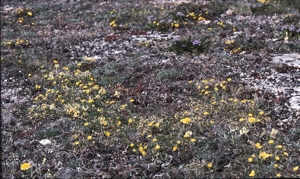In 2008, the Working Group will held its first scientific meeting, jointly with the German Arbeitsgruppe Trockenrasen. The Dry Grassland Meeting 2008 will take place in Kiel at the German Baltic coast from 28 to 30 August 2008. The two major topics of this conference are:

- Dry grasslands in a changing environment (Management of dry grasslands in cultural landscapes, NATURA 2000; conservation of rare species; Changes of land use, eutrophication, and succession; invasion of neophytes - problems and solutions for dry grasslands)
- Vegetation databanks and large-scale classifications of dry grasslands
The program consists of 1 ½ days of lectures and poster presentation and 1 day of excursions to dry grassland areas in Schleswig-Holstein. The conference language will be mainly English although German contributions are also allowed. You are cordially invited to participate in this first conference of the Working Group. Registration is possible until 15 June 2008. For further information, see the conference homepage.
[Homepage]
Publications of the Working Group:
Dengler, J., Rusina, S., Boch, S., Bruun, H. H., Diekmann, M., Dierßen, K., Dolnik, C., Dupré, C., Golub, V. B., Grytnes, J.-A.,
Helm, A., Ingerpuu, N., Löbel, S., Pärtel, M., Rašomavičius, V., Tyler, G., Znamenskiy, S. R., Zobel, M. (2006):
Working group on dry grasslands in the Nordic and Baltic region - Outline of the project and first results for the class
Festuco-Brometea. - Ann. Bot. N. S. 6: 73-100, Rome.

Related publications of Working Group members:
Löbel, S., Dengler, J. (2008): Dry grassland communities on southern Öland: phytosociology, ecology, and diversity. -
Acta Phytogeogr. Suec. 88: 13-32, Uppsala.

Dengler, J., Boch, S. (2007): Taxonomy, ecology, and distribution of six remarkable plant axa (Spermatophyta, Bryophyta, and
Lichenes) of the Estonian dry grassland flora. - Phyton 47: 47-71, Horn.

Boch, S., Dengler, J. (2006): Floristische und ökologische Charakterisierung sowie Phytodiversität der Trockenrasen auf der Insel
Saaremaa (Estland) [Floristic and ecological characterisation as well as species richness of the dry grassland communities on the
island of Saaremaa (Estonia)]. - In: Bültmann, H., Fartmann, T., Hasse, T. [Eds.]: Trockenrasen auf unterschiedlichen
Betrachtungsebenen. - Arb. Inst. Landschaftsökol. Münster 15: 55-71, Münster.

Löbel, S., Dengler, J., Hobohm, C. (2006): Species richness of vascular plants, bryophytes and lichens in dry grasslands:
The effects of environment, landscape structure and competition. - Folia Geobot. 41: 377-393, Průhonice.

Dengler, J., Löbel, S. (2006): The basiphilous dry grasslands of shallow, skeletal soils (Alysso-Sedetalia) on the island
of Öland (Sweden), in the context of North and Central Europe. - Phytocoenologia 36: 343-391, Berlin.

Dengler, J., Löbel, S., Boch, S. (2006): Dry grassland communities of shallow, skeletal soils (Sedo-Scleranthenea) in
northern Europe. - Tuexenia 26: 159-190, 6 Tab., Göttingen.

Dengler, J., Eisenberg, M., Schröder, J. (2006): Die grundwasserfernen Saumgesellschaften Nordostniedersachsens im
europäischen Kontext - Teil I: Säume magerer Standorte (Trifolio-Geranietea sanguinei) [The anhydromorphic forest
edge communities of NE Lower Saxony (Germany) in an European context - Part I: Nutrient-poor sites (Trifolio-Geranietea
sanguinei)]. - Tuexenia 26: 51-93, 9 Tab., Göttingen.

Dengler, J. (2005): Zwischen Estland und Portugal - Gemeinsamkeiten und Unterschiede der Phytodiversitätsmuster
europäischer Trockenrasen [From Estonia to Portugal - Common properties and differences of phytodiversity patterns in dry
grassland communities of Europe]. - Tuexenia 25: 387-405, Göttingen. [link auf JD076.pdf]

Dengler, J., Koska, I., Timmermann, T., Berg, C., Clausnitzer, U., Isermann, M., Linke, C., Päzolt, J., Polte, T.,
Spangenberg, A. (2004): New descriptions and typifications of syntaxa within the project 'Plant communities of
Mecklenburg-Vorpommern and their vulnerability' - Part II. - Feddes Repert. 115: 343-392, Weinheim.
